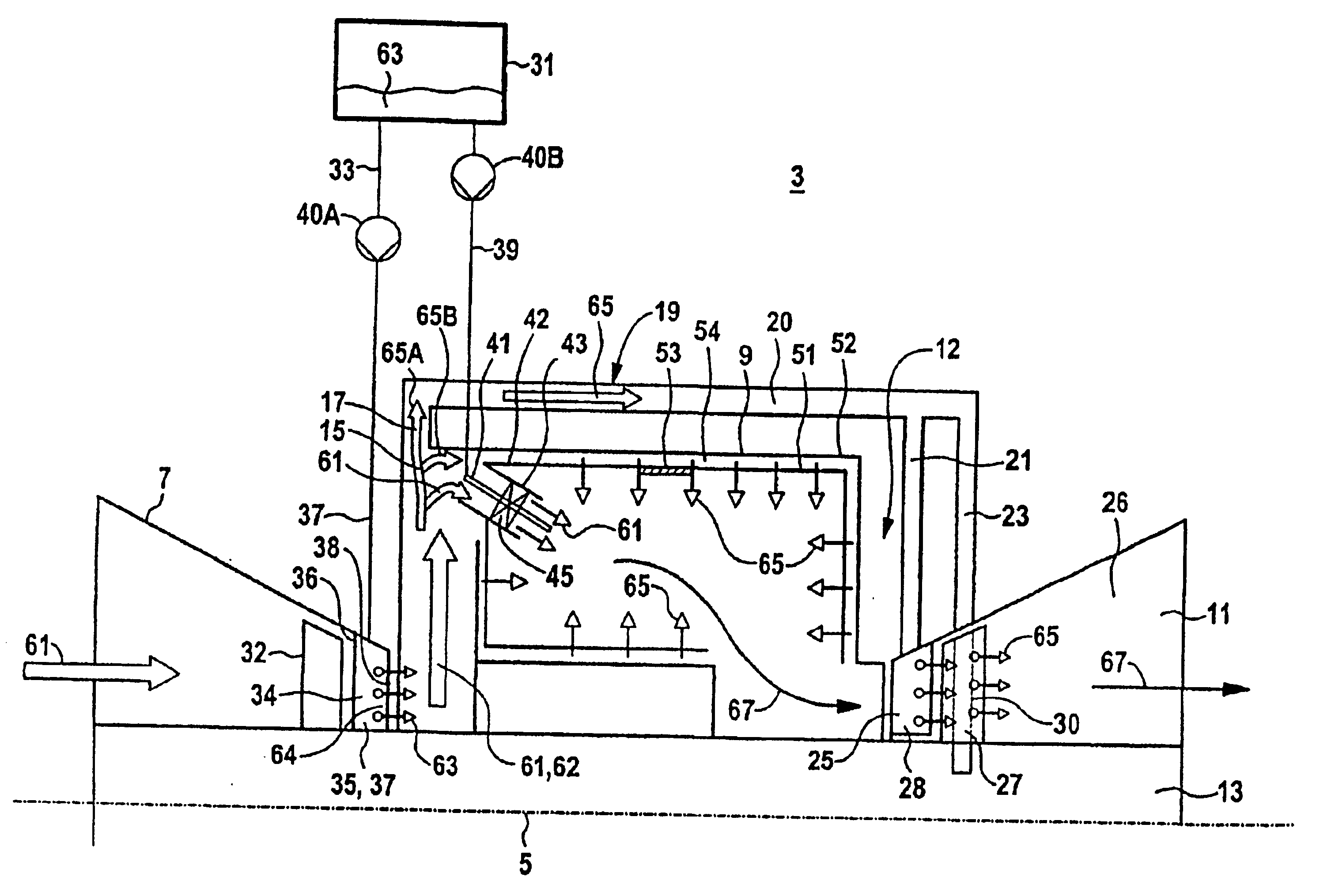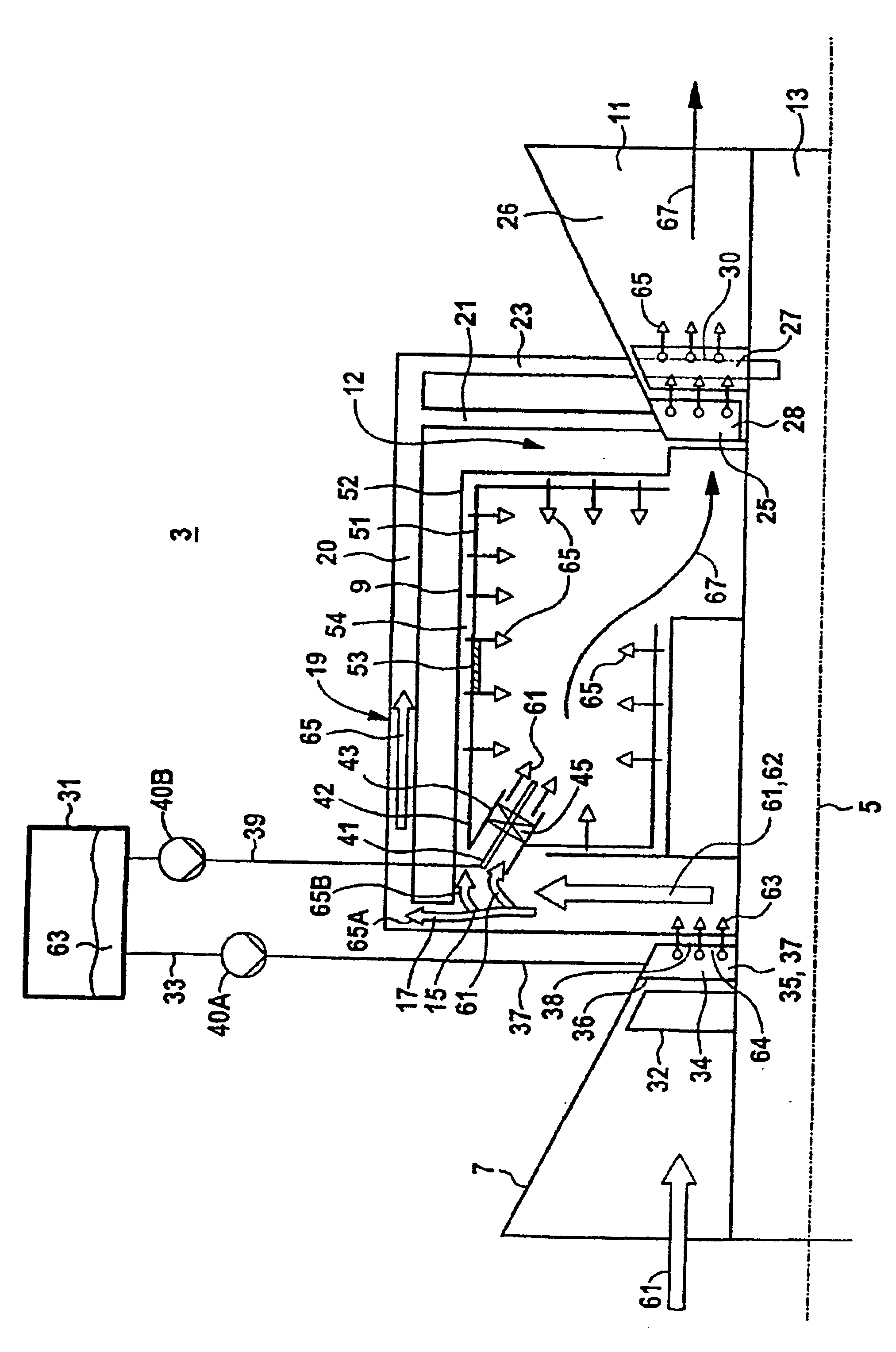Gas turbine and method for operating a gas turbine
a gas turbine and gas turbine technology, applied in the field of gas turbines, can solve the problems of inability to meet the actual gas turbine process of the gas turbine, inability to supply cooling air to and loss of cooling air flowing into the cooling air supply system in terms of the actual gas turbine process for the generation of mechanical energy, etc., to achieve low complication, high specific power, and high efficiency
- Summary
- Abstract
- Description
- Claims
- Application Information
AI Technical Summary
Benefits of technology
Problems solved by technology
Method used
Image
Examples
Embodiment Construction
A compressor 7, a combustion chamber 9 and a turbine part 11 are arranged sequentially along an axis 5. The compressor 7 and the turbine part 11 are arranged on a common rotor 13. The compressor 7 is connected to the combustion chamber 9 by way of a combustion air duct 15. The combustion air duct 15 is connected to a cooling air supply system 19 at a branch position 17. The cooling air supply system 19 includes a first cooling air duct 20, from which a first secondary cooling air duct 21 and a second secondary cooling air duct 23 branch off.
The first secondary cooling air duct 21 is connected to a hollow guide vane 25 of a guide vane row 28 of the turbine part 11. The guide vane row 28 is a first guide vane row 28, viewed in the flow direction, of the turbine part 11. The second cooling air duct 23 is connected to a rotor blade 27 of a rotor blade row 30 of the turbine part 11. The rotor blade row 30 is a first rotor blade row 30, viewed in the flow direction, of the turbine part 11...
PUM
 Login to View More
Login to View More Abstract
Description
Claims
Application Information
 Login to View More
Login to View More - R&D
- Intellectual Property
- Life Sciences
- Materials
- Tech Scout
- Unparalleled Data Quality
- Higher Quality Content
- 60% Fewer Hallucinations
Browse by: Latest US Patents, China's latest patents, Technical Efficacy Thesaurus, Application Domain, Technology Topic, Popular Technical Reports.
© 2025 PatSnap. All rights reserved.Legal|Privacy policy|Modern Slavery Act Transparency Statement|Sitemap|About US| Contact US: help@patsnap.com


